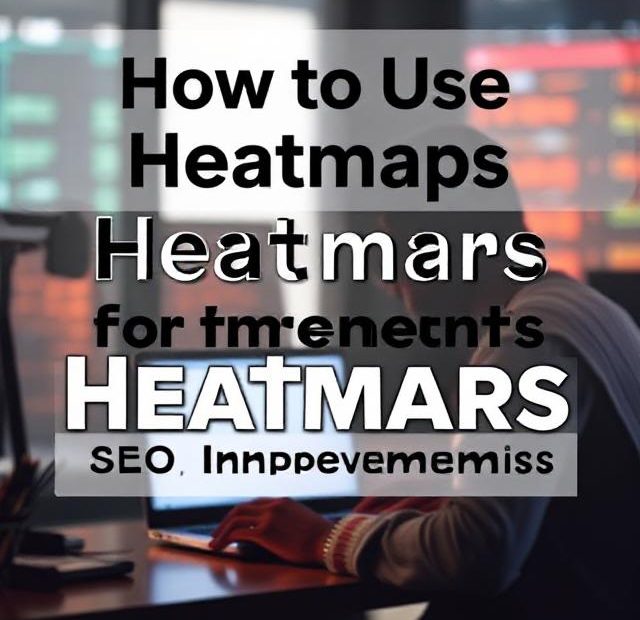When it comes to optimizing your website for search engines, it’s easy to focus solely on keywords, backlinks, and technical tweaks. But user behavior plays a massive role in SEO success too. Understanding how visitors interact with your site—where they click, how far they scroll, and what they ignore—can reveal powerful insights for improving rankings and conversions.
This is where heatmaps come in. Heatmaps are visual tools that show exactly how users engage with your web pages. They provide a color-coded representation of clicks, scrolls, and mouse movements, helping you spot areas that capture attention or cause confusion.
In this article, I’ll explain what heatmaps are, why they matter for SEO, and how you can use them step-by-step to make meaningful improvements to your site’s performance.
What Are Heatmaps?
Heatmaps aggregate user interaction data and display it visually, usually as a spectrum of colors—red indicates high engagement, yellow moderate, and blue or green low interaction.
There are three common types of heatmaps:
-
Click Heatmaps: Show where users click most frequently.
-
Scroll Heatmaps: Indicate how far down the page visitors scroll.
-
Mouse Movement Heatmaps: Track cursor movements, often correlating with user attention.
These insights help you understand what parts of your page are working well and which areas might be ignored or confusing visitors.
Why Heatmaps Matter for SEO
Search engines like Google increasingly factor user experience (UX) signals into their ranking algorithms. A site that engages users and keeps them interacting is likely to rank better.
Here are a few reasons heatmaps help with SEO:
-
Improve User Engagement: By seeing what visitors focus on, you can optimize content layout and calls to action.
-
Reduce Bounce Rates: Heatmaps reveal if important info or links are missed, causing users to leave prematurely.
-
Enhance Conversion Rates: Understanding click patterns helps place buttons or forms where they’re more likely to be used.
-
Identify Content Gaps: Scroll heatmaps can show if users stop reading before reaching key messages or offers.
-
Optimize Site Structure: If users ignore navigation menus or important links, heatmaps highlight these issues for fixes.
Step 1: Choose the Right Heatmap Tool
Several tools offer heatmap functionality, ranging from free versions to advanced paid platforms. Popular options include:
-
Hotjar
-
Crazy Egg
-
Microsoft Clarity (free)
-
Lucky Orange
Select one that fits your budget and integrates easily with your site platform.
Step 2: Set Up Heatmaps on Key Pages
Start by installing the heatmap tracking code on your website. Most tools provide a simple script you add to your site’s header or via a tag manager.
Focus on the pages that matter most for SEO and user engagement:
-
Homepage
-
Landing pages
-
Blog posts with high traffic
-
Product or service pages
-
Contact or signup pages
These pages typically have the highest impact on SEO and conversions.
Step 3: Analyze Click Heatmaps
Look at where users click the most and least. Are visitors clicking on non-clickable elements out of confusion? Are your calls-to-action (CTAs) getting enough attention?
What to look for:
-
Hotspots on buttons and links that drive conversions.
-
Dead zones where visitors aren’t clicking but you expect engagement.
-
Unexpected clicks on elements that aren’t interactive (indicates UX issues).
If users click elements that aren’t clickable, consider making them actionable or redesigning for clarity.
Step 4: Evaluate Scroll Heatmaps
Scroll heatmaps reveal how far visitors scroll down your pages. If important content is below the point where most users stop scrolling, you might lose engagement.
Key points:
-
Identify the “fold” (the bottom of the screen before scrolling).
-
Ensure key content and CTAs are placed above the fold or encourage scrolling.
-
If users drop off early, consider shortening content or making it more engaging.
Optimizing page length and layout based on scroll behavior can reduce bounce rates and improve SEO signals.
Step 5: Study Mouse Movement Heatmaps
Although mouse movements don’t always perfectly track eye movement, they offer a useful proxy for where users focus attention.
What to check:
-
Do users hover over important links or text?
-
Are there areas with lots of movement but no clicks, suggesting confusion or hesitation?
-
Use insights to refine content placement and highlight key elements better.
Step 6: Combine Heatmap Data with Other Metrics
Heatmaps are powerful alone but become even more insightful when paired with other data sources:
-
Google Analytics: Correlate heatmap behavior with bounce rates, time on page, and conversion data.
-
Session Recordings: Watch individual user sessions to see heatmaps in motion.
-
A/B Testing: Use heatmap insights to design tests that improve UX and SEO performance.
Together, these tools paint a comprehensive picture of user engagement and site effectiveness.
Step 7: Implement Changes and Monitor Results
Based on heatmap findings, take actionable steps:
-
Move or redesign CTAs for better visibility.
-
Adjust content placement or length.
-
Fix confusing UI elements.
-
Improve page load times if user attention drops quickly.
After implementing changes, continue monitoring heatmaps regularly to track improvements and uncover new issues.
Final Thoughts
Heatmaps offer a unique window into user behavior that traditional SEO tools can’t provide. They bridge the gap between search engine rankings and actual user engagement, helping you create websites that visitors love and search engines reward.
By systematically using heatmaps to analyze clicks, scrolls, and mouse movements, you’ll uncover hidden opportunities to improve user experience and boost SEO results.
So, if you want to take your SEO efforts to the next level, start harnessing the power of heatmaps today. Your website visitors—and Google—will thank you.
Also, you can learn more about SEO Strategies here.
